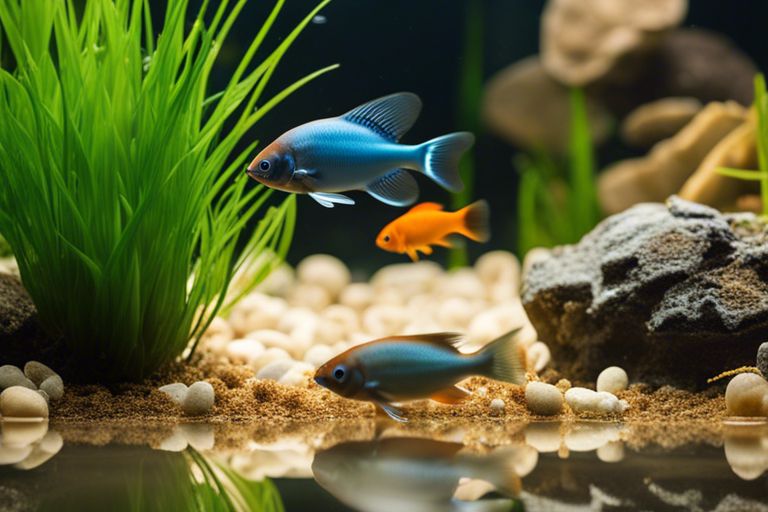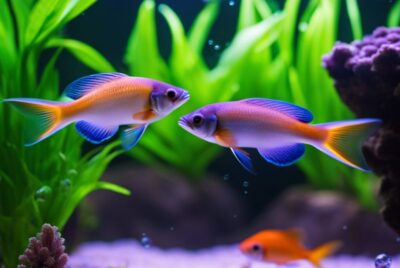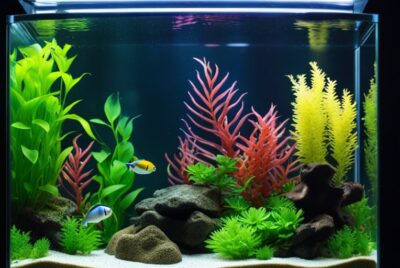“Substrate Selection – The Best Floor Medium for Your Aquarium”
There’s a crucial element to consider when setting up your aquarium that often gets overlooked – the choice of substrate. The substrate, or floor medium, not only enhances the visual appeal of your aquatic environment but also plays a vital role in the well-being of your fish and plants. In this guide, we will examine into the different types of substrates available, their benefits, and how to select the best one for your specific aquarium setup. By understanding the importance of substrate selection, you can create a thriving and visually stunning underwater world for your aquatic pets to enjoy.
Understanding Aquarium Substrate
Your aquarium substrate plays a crucial role in the overall health and well-being of your aquatic environment. From providing essential nutrients for plants to creating a natural habitat for fish, choosing the right substrate is essential for a successful aquarium setup. Understanding the different types of substrates available and their characteristics is key to creating a thriving ecosystem in your tank.
Substrate Types and Their Characteristics
When selecting a substrate for your aquarium, it’s important to consider the specific needs of your aquatic plants and fish. Different types of substrates offer varying characteristics that can impact the overall health and appearance of your tank. Here are some common substrate types and their key characteristics:
| Substrate | Characteristics |
|---|---|
| Sand | Provides a natural look, allows plant roots to anchor, but may compact over time. |
| Gravel | Offers good water circulation, easy to clean, but may not provide sufficient nutrients for plant growth. |
| Aquasoil | Rich in nutrients, promotes plant growth, but can be costly and may alter water parameters. |
| Marbles | Decorative, easy to clean, but may not support plant growth effectively. |
| Crushed Coral | Raises pH levels, suitable for marine tanks, but not ideal for all freshwater species. |
Assume that the type of substrate you choose will have a direct impact on the overall health and appearance of your aquarium. It’s essential to research each substrate type carefully and consider the specific requirements of your aquatic plants and fish before making a selection.
Importance of Substrate for Plant and Fish Health
Substrate plays a vital role in providing essential nutrients for plant growth and creating a natural habitat for fish. The right substrate can help anchor plant roots, promote healthy growth, and create a stable environment for fish to thrive. In addition, the substrate serves as a biological filter, hosting beneficial bacteria that aid in breaking down waste and maintaining water quality.
Importance of Substrate: Proper substrate selection is essential for the overall health and well-being of your aquarium ecosystem. By choosing a substrate that meets the specific needs of your plants and fish, you can create a balanced and thriving aquatic environment. Take the time to research and select the best substrate for your tank to ensure the long-term success of your aquarium.
Choosing the Right Substrate
Assuming you are setting up a new aquarium or considering changing the substrate in an existing one, choosing the right substrate is crucial for the overall health and well-being of your aquatic environment. The substrate not only serves as a foundation for your plants and decorations but also impacts the water quality, nutrient cycling, and overall stability of the aquarium.
Considerations for Freshwater Aquariums
One of the key considerations for freshwater aquarium substrates is the type of plants and fish you plan to have in your tank. For aquariums with live plants, a nutrient-rich substrate like aqua soil or fine gravel is recommended to provide essential nutrients for plant growth. Additionally, consider the pH requirements of your fish species when selecting a substrate, as certain substrates can influence water chemistry.
Another factor to consider is the ease of cleaning and maintenance. Some substrates, like sand, can trap debris and waste, making it harder to clean. On the other hand, gravel allows for better water circulation and waste removal, but may require occasional vacuuming to prevent buildup.
Considerations for Saltwater Aquariums
An important consideration for saltwater aquarium substrates is the compatibility with marine life, particularly for fish and invertebrates that inhabit the bottom of the tank. Sand is a popular choice for saltwater aquariums as it mimics the natural habitat of many marine species and allows for burrowing and sifting behaviors. Additionally, sand substrates can contribute to biological filtration by hosting beneficial bacteria.
For instance, aragonite sand is a popular choice for reef tanks as it helps maintain stable pH levels and supports the growth of corals and other calcareous organisms. When choosing a substrate for a saltwater aquarium, it is essential to research the specific needs of your marine species to ensure a suitable environment for their health and well-being.
Substrate Maintenance Tips
Some people believe that once they have chosen and installed the perfect substrate for their aquarium, their job is done. However, proper maintenance is key to ensuring a healthy and thriving aquatic environment. Here are some essential tips for substrate maintenance:
Cleaning and Replacement Strategies
With regular maintenance, you can prevent the build-up of debris and waste in your substrate. Use a gravel vacuum or siphon to remove any uneaten food, fish waste, or debris that accumulates on the substrate surface. It is recommended to perform a partial substrate cleaning during water changes to prevent the release of harmful toxins into the water column.
Consider replacing a portion of your substrate every 1-2 years to prevent compaction and nutrient depletion. When replacing the substrate, make sure to thoroughly rinse and clean the new substrate to remove any debris or dust before adding it to the aquarium.
Maintaining a Balanced Ecosystem
Replacement of a portion of the substrate can also help maintain a balanced ecosystem in your aquarium. Over time, beneficial bacteria colonies establish themselves in the substrate, helping to break down waste and maintain water quality. By replacing a portion of the substrate periodically, you can prevent the build-up of harmful substances and promote the growth of beneficial bacteria.
Maintaining a balanced ecosystem is crucial for the overall health of your aquarium inhabitants. By following a regular substrate maintenance routine, you can create a clean and healthy environment that supports the well-being of your fish and plants.
Common Substrate Options Reviewed
Gravel and Sand
Reviewed in this section are two of the most common substrate options for aquariums: gravel and sand. Gravel comes in various sizes and colors, allowing for customization and aesthetic appeal in your tank. It provides a great surface for beneficial bacteria to thrive and can also be used for anchoring plants. On the other hand, sand is finer and can create a sleek, natural look in the aquarium. It is ideal for bottom-dwelling fish species as it is gentle on their barbels and fins.
When choosing between gravel and sand, consider the specific needs of your aquarium inhabitants. For example, if you have fish that like to sift through the substrate or dig, sand may be a better option as it won’t trap debris like gravel can. Both substrates require regular maintenance to prevent the buildup of detritus and ensure water quality remains optimal in the tank.
Specialty Substrates for Planted and Reef Tanks
On the other hand, specialty substrates cater to the needs of planted and reef tanks, offering unique benefits for aquatic flora and fauna. These substrates are typically enriched with nutrients to support plant growth or promote healthy coral development. They may also contain buffers to help maintain stable pH levels in the tank, crucial for the well-being of sensitive organisms.
Specialty substrates for planted and reef tanks can be a game-changer for aquarists looking to create a thriving underwater ecosystem. From nutrient-rich soil substrates for lush plant growth to aragonite sand for maintaining calcium levels in reef tanks, these specialized options provide the foundation for success in more advanced aquarium setups.
Summing up
Now that you understand the importance of substrate selection and its impact on the overall health of your aquarium, you are equipped to make an informed decision on the best floor medium for your aquatic environment. Remember to consider the specific needs of your fish, plants, and overall aesthetic preferences when choosing the substrate. By selecting the right substrate, you can create a thriving and visually appealing aquarium that will bring you joy and satisfaction for years to come.



